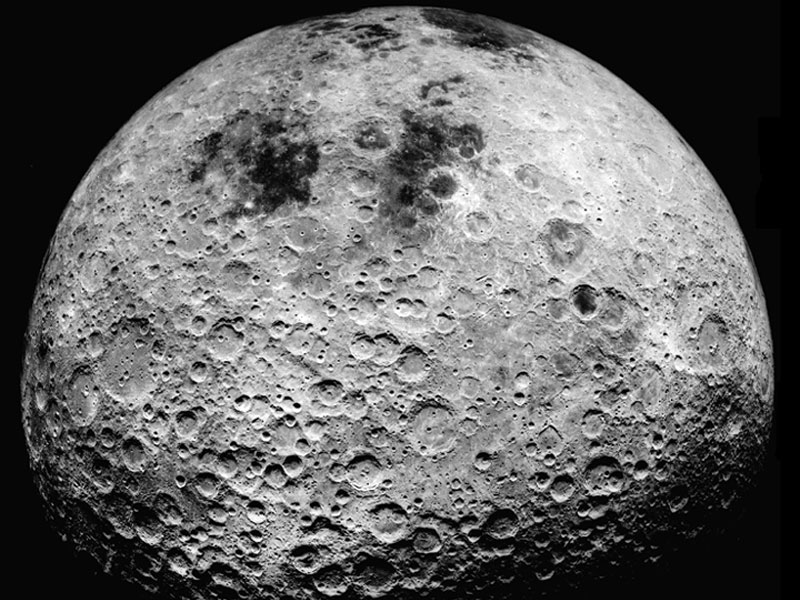The Far Side of the Moon
The Japanese Lunar Explorer, KAGUYA, has found a clear difference between the gravity on the far side of the moon and the near side. The discovery is significant because it is evidence of the different interior and thermal history of the two sides.

The lunar gravity field is estimated from radiowave tracking of spacecraft orbiting over the lunar surface. Since the far side of the Moon cannot be observed from the Earth, spacecraft over the far side of the Moon cannot be tracked directly.
Previously the far side gravity of the Moon was obtained basically from the extrapolation of the spacecraft orbit over the near side. KAGUYA has two subsatellites (the relay subsatellite OKINA and VLBI subsatellite OUNA) for the far side gravity measurement.
Since OKINA relays and transmits Doppler tracking signals of radiowave between the main satellite over the far side and the ground radio antenna, the orbits of the main satellite can be determined precisely. Thus we can obtain the accurate far side gravity field of the Moon.
So, what exactly is the “far side of the moon” anyway?
The far side of the Moon is the lunar hemisphere that is permanently turned away from the Earth. The far hemisphere was first photographed by the Soviet Luna 3 probe in 1959, and was first directly observed by human eyes when the Apollo 8 mission orbited the Moon in 1968. The rugged terrain is distinguished by a multitude of crater impacts, as well as relatively few lunar maria. It includes the largest known impact feature in the Solar System: the South Pole-Aitken basin.
The findings from the KAGUYA explorer were presented by Dr. Sho Sasaki of National Astronomical Observatory of Japan at the 40th annual meeting of the Division for Planetary Sciences of the American Astronomical Society.
KAGUYA was the same explorer that brought us the first High-Def images of Earth last year.